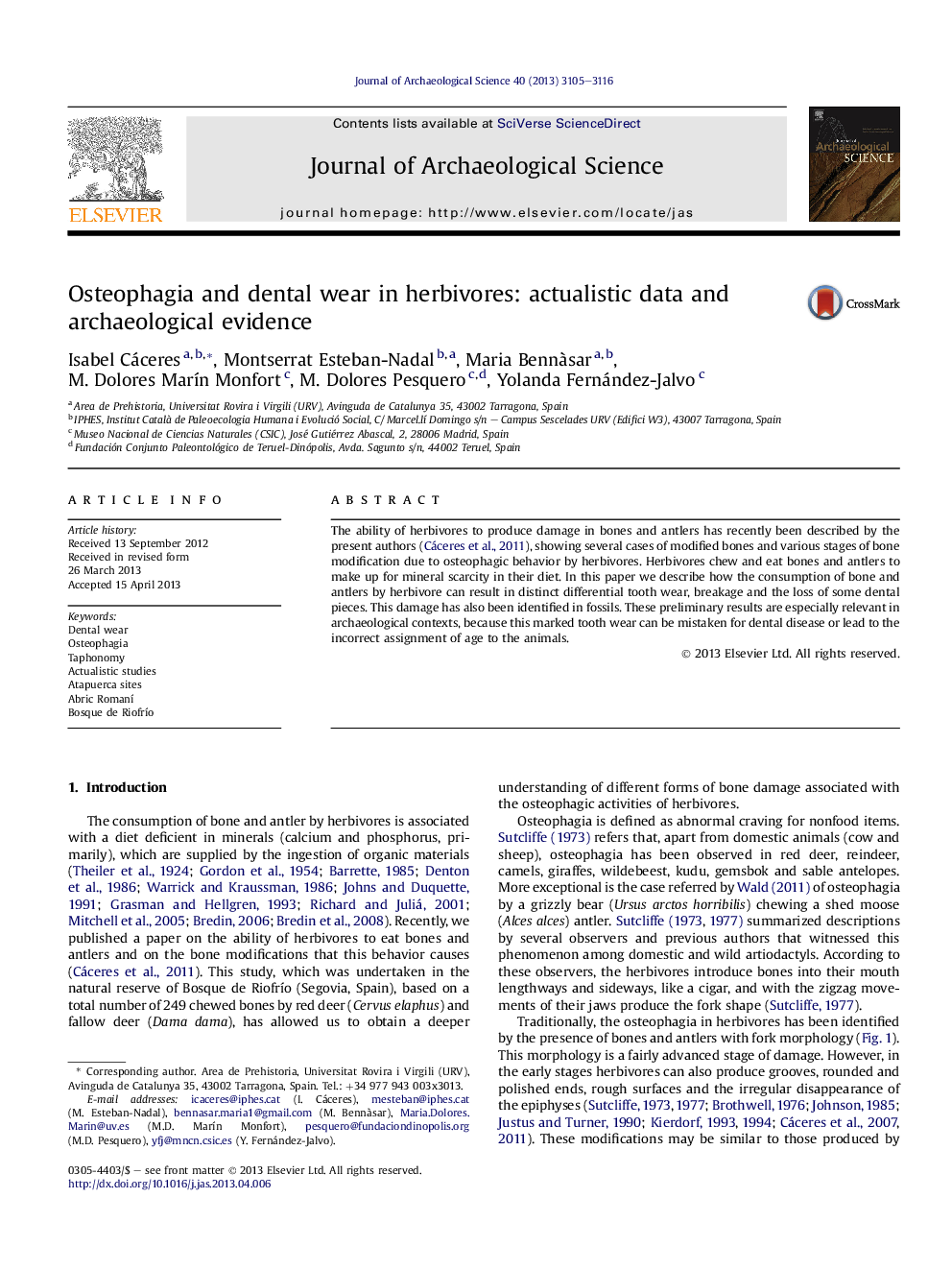| Article ID | Journal | Published Year | Pages | File Type |
|---|---|---|---|---|
| 1035399 | Journal of Archaeological Science | 2013 | 12 Pages |
•Herbivores eat bones and antler in order to supplement the lack of minerals in their diet.•Osteophagic practices can produce several modifications in dentition of herbivores.•The main modification is a marked wear on teeth and dental breakage.•This phenomenon can result in a misidentification of the age and health of the animal.
The ability of herbivores to produce damage in bones and antlers has recently been described by the present authors (Cáceres et al., 2011), showing several cases of modified bones and various stages of bone modification due to osteophagic behavior by herbivores. Herbivores chew and eat bones and antlers to make up for mineral scarcity in their diet. In this paper we describe how the consumption of bone and antlers by herbivore can result in distinct differential tooth wear, breakage and the loss of some dental pieces. This damage has also been identified in fossils. These preliminary results are especially relevant in archaeological contexts, because this marked tooth wear can be mistaken for dental disease or lead to the incorrect assignment of age to the animals.
